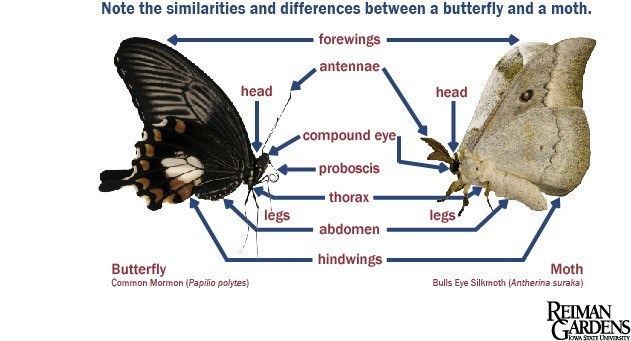One of the easiest ways to tell the difference between a butterfly and a moth is to look at the antennae. A butterfly’s antennae are club-shaped with a long shaft and a bulb at the end. A moth’s antennae are feathery or saw-edged. Some other ways include:
Wings
- Butterflies tend to fold their wings vertically up over their backs. Moths tend to hold their wings in a tent-like fashion that hides the abdomen.
- Butterflies are typically larger and have more colorful patterns on their wings. Moths are typically smaller with drab-colored wings.
Anatomy
- Moths have a frenulum, which is a wing-coupling device. Butterflies do not have frenulums. Frenulums join the forewing to the hind wing, so the wings can work in unison during flight.
Behavior
- Butterflies are primariy diurnal, flying in the daytime. Moths are generally nocturnal, flying at night. However, there are moths that are diurnal, such as the buck moth and there are butterflies that are crepuscular, that is, flying at dawn and dusk.
Cocoon/Chrysalis
- Cocoons and chrysalides are protective coverings for the pupa. The pupa is the intermediate stage between the larva and adult. A moth makes a cocoon, which is wrapped in a silk covering. A butterfly makes a chrysalis, which is hard, smooth and has no silk covering
What am I?
